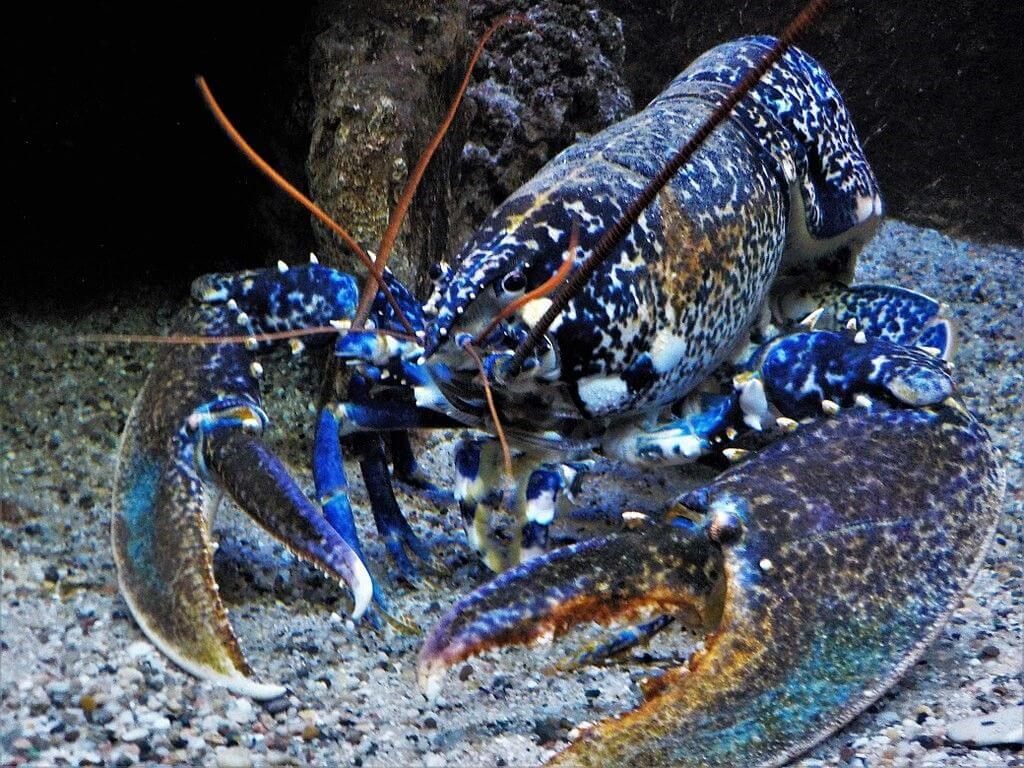
People who have never seen a lobster in real life tend to think of them as bright red, just like drawings and photos usually depict them. Bright red lobsters are typically only of the cooked variety, though, but this misconception continues to charge on.
In reality, lobsters can be anything from greenish-brown to yellow to…blue? Yes, even blue! In addition to the many colors that can take form on their shells, lobsters might also come with different patterns, like stripes and spots, making each one a little bit different.
Why So Many Colors?
Just like us humans, lobsters can come in a variety of different hues. Often, the color is a tell-tale sign about where that lobster came from. In other cases, a rare lobster might pop up in a see of differently colors lobsters, indicating that it has some type of rare mutation. In other words, lobsters can be just as unique as we are!
Lobster shells have pigment just like human skin. When lobsters get cooked, the pigment gets destroyed which ends up changing the color of the shell (usually to that gorgeous bright red we all know!). However, when the lobsters are live, that pigment can give them varying shades of green, yellow, and blue. Some lobsters might even be lacking pigment, causing them to become white, or albino. This is similar to what happens in humans and animals when they’re born with a mutation that leads to albinism. Blue lobsters are also often the result of a genetic variation and are extremely rare to find.
The type of water a lobster comes from can also dictate what its shell looks like. Those in water that stays cold most of the year, like the coast of Maine, tend to have harder shells that remain darker in pigment than lobsters from warmer waters, like California, with softer shells. Hard shells are also found on lobsters who haven’t shed their shells yet to make room for new growth. Once their new shells come in, they might appear lighter than they were.
Now, what about those patterned lobsters? You might see pictures of lobsters with stripes. These do exist and they’re known as a spiny lobster. They’re typically found in tropical waters and have colors and a pattern that help them disguise themselves in rock caves and reefs. Spotted lobsters, also known as calico lobsters, usually have an orange-yellow shell with black spots but can take on different forms. It’s estimated that the rarity of catching one of these beauties is 1 in 30 million!
The Rainbow World of Lobsters
Most of the lobsters you’ll see for sale at the local market have a greenish-brown hue. If you do happen to be one of the lucky ones to spot a bright blue, yellow, or orange lobster, consider yourself very lucky! A seafood distributor in Maryland recently found a calico lobster in a shipment and is sending the unique crustacean to an aquarium.
A different color shell certainly doesn’t mean there’s anything wrong with your lobster; it just means that you’ve spotted a rarity of nature. These rainbow-hued lobsters can come from almost any lobster pool and you never know when they might make their way to your local market.
To keep learning everything there is to know about lobsters, we invite you to check out Seafood University, where we share articles, recipes, and cooking tips with lobster fans like you! You can also order the very best Maine lobster online right from our website to get it shipped to your door using our safe and secure shipping methods.

